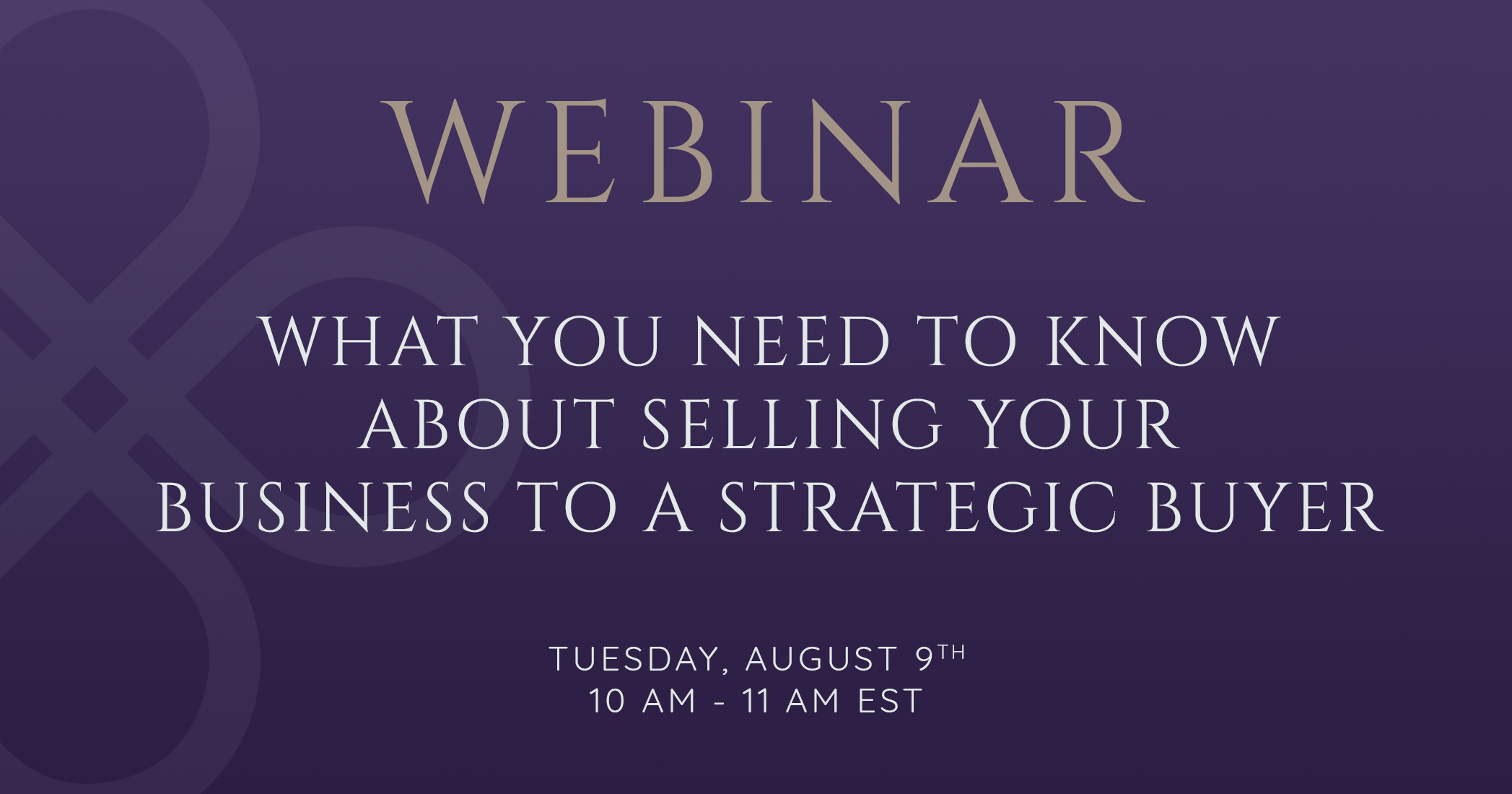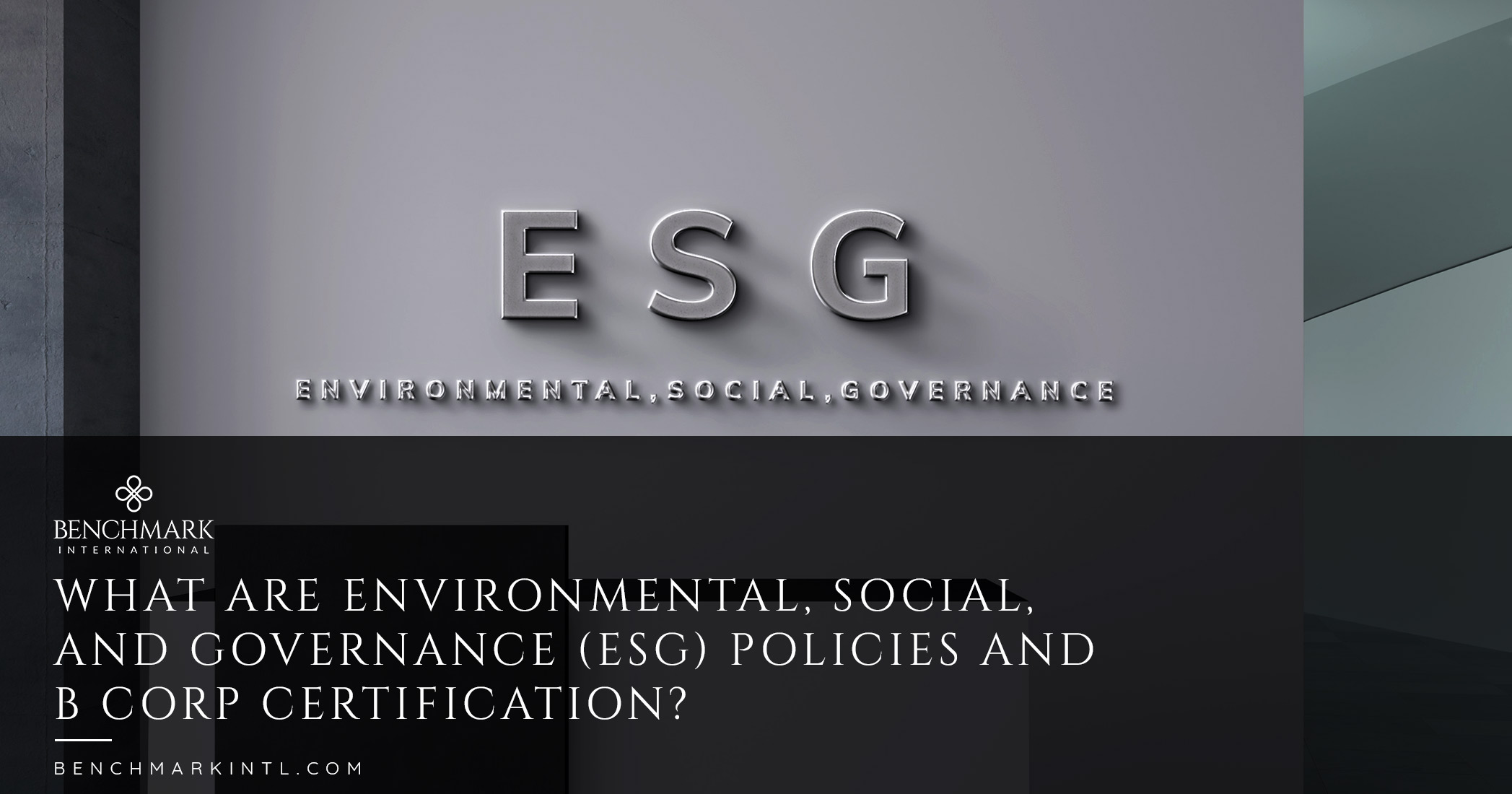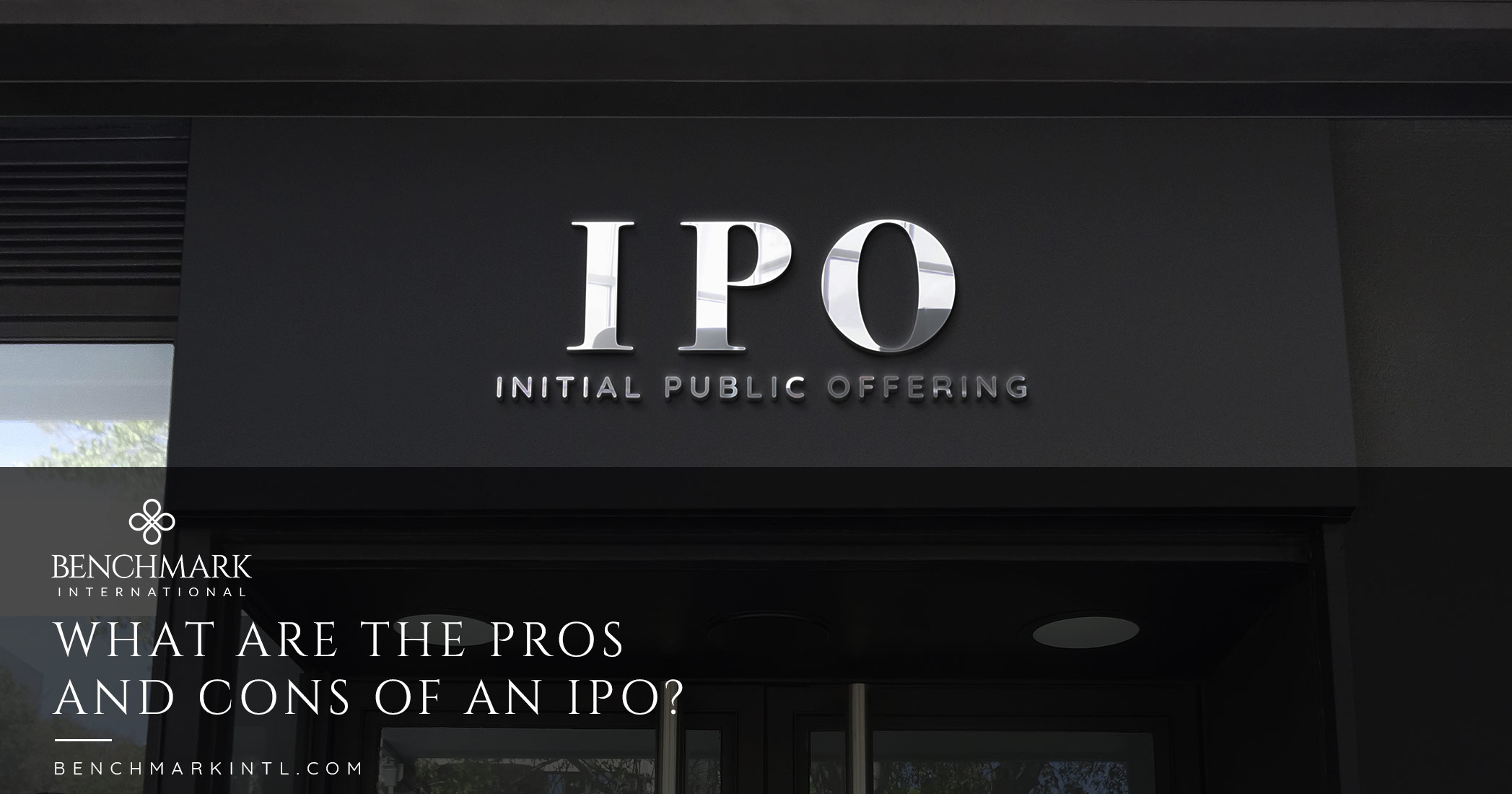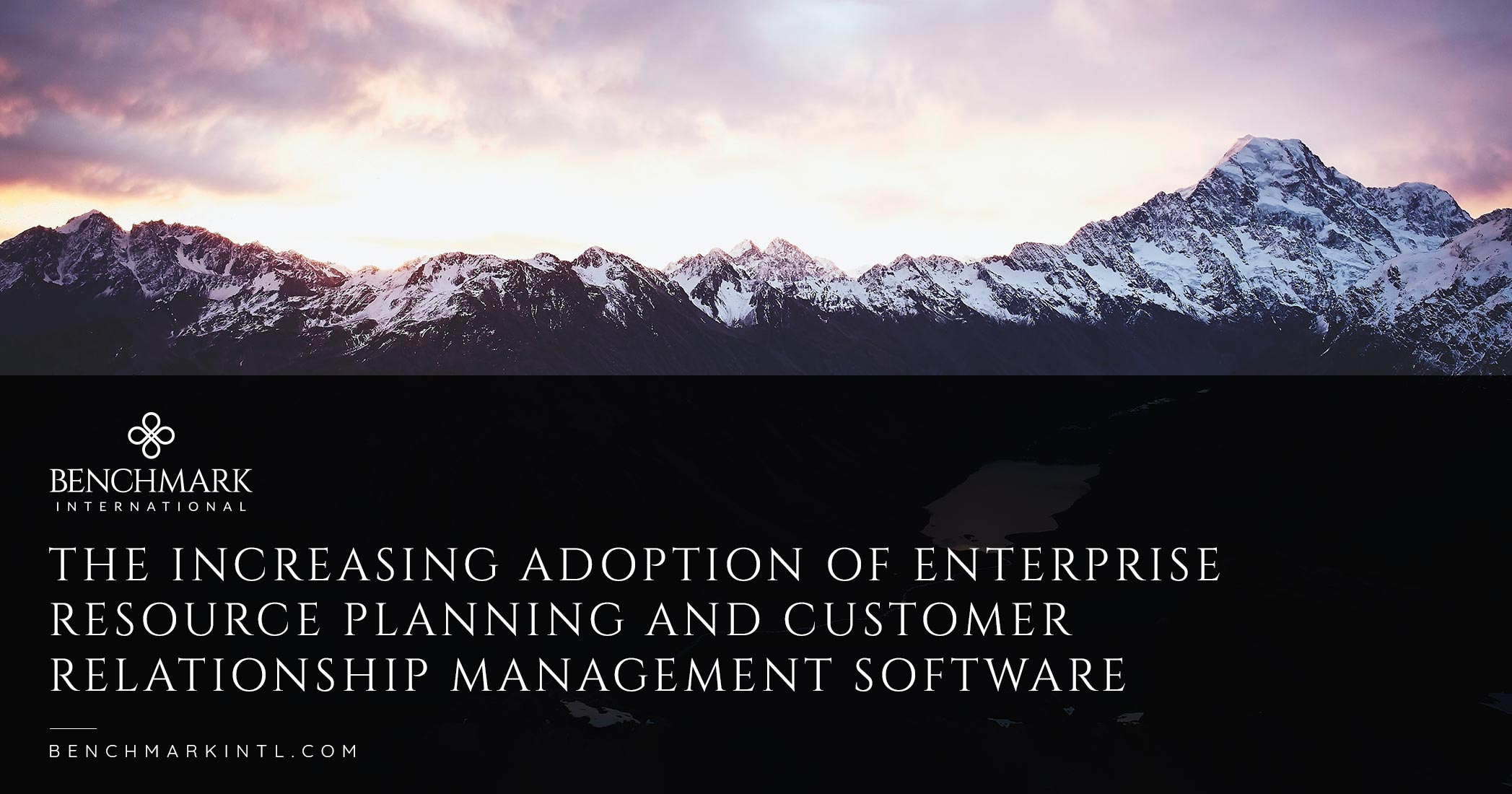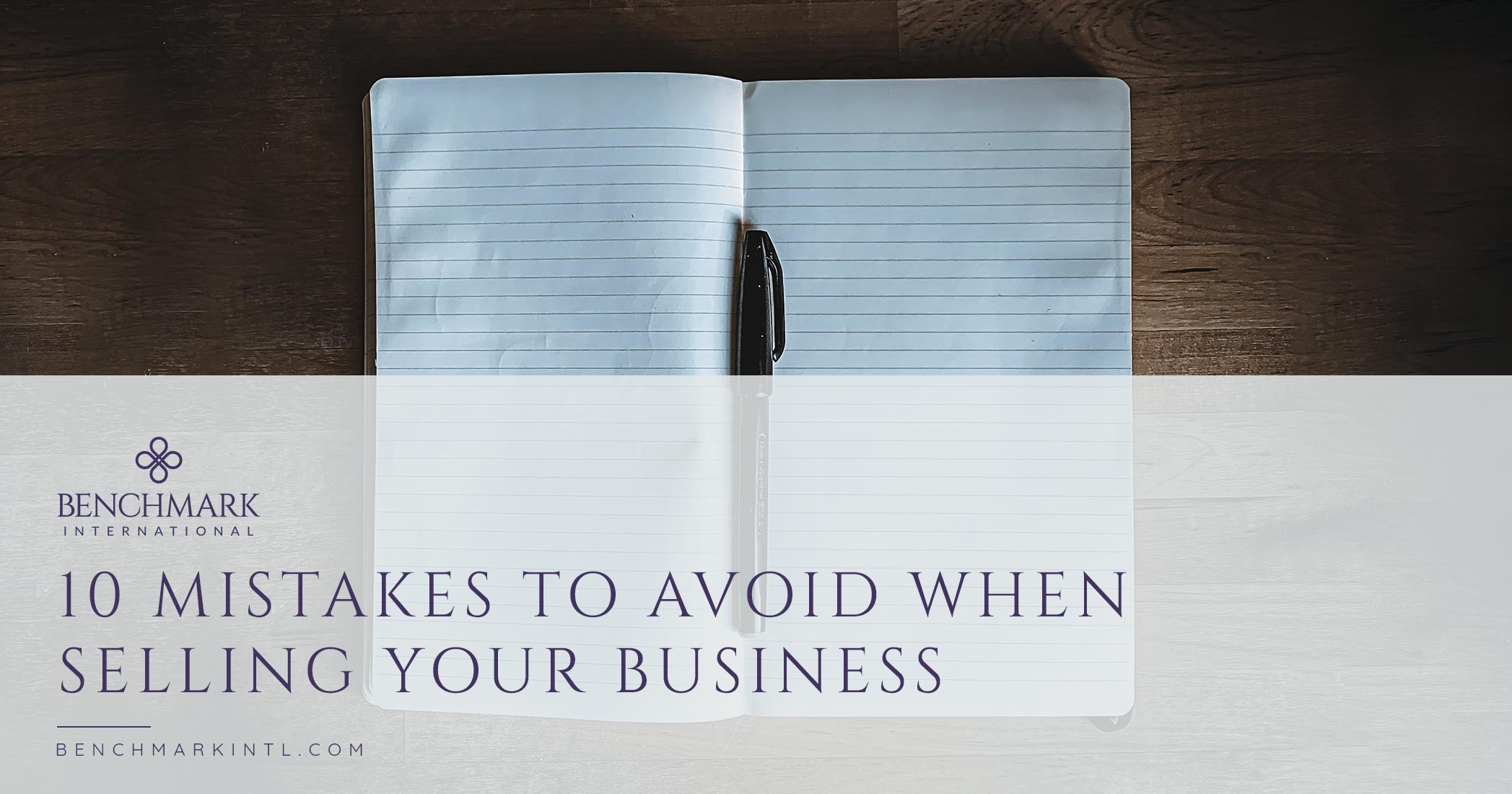Benchmark International has successfully facilitated a transaction between Bone Daddy’s, a Texas barbeque joint, and The Island Spot, a Jamaican restaurant with multiple locations.
READ MORE >>Archives
Benchmark International Facilitated The Transaction Between Bone Daddy’s, Inc. And The Island Spot
Benchmark International Facilitated The Transaction Between Neil Dornbusch And Associates And Anderson Process
The seller, Neil Dornbusch and Associates, located in New Prague, Minnesota, has been providing pumping and fluid handling solutions since 1988. They fabricate and custom-build food processing plants, specializing in sanitary and stainless-steel applications. They also assist with the design of fluid handling systems.
READ MORE >>Share this:
Seven Key Takeaways from the Mini-Budget for Business Owners
On 23rd September, Chancellor Kwasi Kwarteng delivered his mini-budget, announcing comprehensive changes to tax in a bid to boost economic growth.
Ultimately, the changes are designed to improve the ability of British companies to raise money, attract talent, and grow and succeed.
With increased incentives to invest introduced in one go, as well as a number of tax breaks – what are the changes and how do these directly affect business owners and investment?
READ MORE >>Share this:
U.S. Small Business Confidence Drops Amid Inflation Concerns
Last month, small business sentiment in the U.S. fell to its lowest level in nearly 9-1/2 years due to concerns surrounding inflation. Yet, at the same time, demand for labor remains more substantial than expected as companies continue to pursue growth.
Share this:
Upcoming Webinar: What You Need To Know About Selling Your Business To A Strategic Buyer
Join us for the complimentary webinar: What You Need To Know About Selling Your Business To A Strategic Buyer.
READ MORE >>Share this:
What Are Environmental, Social, And Governance (ESG) Policies And B Corp Certification?
As a business owner, you may have noticed an increase in conversations regarding environmental, social, and governance (ESG) policies in the workplace and B Corp status. Even though these policies are being implemented more frequently with larger companies, many small and mid-size business owners are not fully aware of what these policies are, what they mean, and how they are affecting investor behavior and M&A transactions. Let’s start by breaking down exactly what ESG is.
READ MORE >>Share this:
What Are The Pros And Cons Of An IPO?
An IPO is an initial public offering (IPO), which is the first limited public stock sale by a private company. IPOs are a strategy often used by smaller businesses to raise capital from public investors in order to facilitate expansion and growth. Once public, the company can be traded on the open market. There are both upsides and downsides to taking a company public.
READ MORE >>Share this:
Top Reasons Business Owners Seek An M&A Strategy
What is an M&A Strategy?
A strategy for a merger or acquisition is the rationale behind the transaction. Your objective should determine the type of deal that is right for your company. Maybe there is even more than one objective. Commonly, these goals are focused on boosting financial performance and mitigating risk.
Share this:
The M&A Process From A Buyer’s Perspective
When it comes to mergers and acquisitions, it is common for a seller to struggle to see the transaction from a buyer’s point of view. This is quite understandable because a business owner spends years, and even decades, building their company into a successful venture. It makes it more difficult to see the transaction from a potential buyer’s perspective. Many M&A transactions fall through because the seller and buyer simply cannot get on the same page. As a seller, you can work with an experienced M&A advisor to help you manage your expectations for the value of your company so that you can not only get the most out of your deal but also make sure the deal goes through. If you’re selling a business, you should understand how the valuation of a company works, what it is based on, and what is important to a buyer.
READ MORE >>Share this:
What Is A Sustainable Growth Rate?
As a business owner, it is important to have a solid understanding of what a sustainable growth rate (SGR) is, and why it matters to the valuation of your company.
READ MORE >>Share this:
M&A Trends In The Lower And Middle Markets
In the first quarter of 2022, global middle-market M&A activity maintained the momentum that we saw in 2021. Last year, lower and middle-market companies played major roles in deal-making activity. Companies of all sizes enjoyed significant buyer interest in sectors ranging from tech, transportation, healthcare, manufacturing, and logistics.
A notable imbalance in supply and demand in the lower and middle markets has been driving up the valuations of healthy companies in hot sectors. This trend is expected to continue through 2022 for strong companies in the lower and middle markets, especially in sectors such as healthcare, cybersecurity, cloud computing, artificial intelligence, and niche manufacturing.
READ MORE >>Share this:
What Are SPACs?
Share this:
10 Inspirational Graphics About Retirement
2022 Real Estate Industry Report
Share this:
Mortgage Brokerage Industry Report
The Global Market
The onset of the COVID-19 pandemic rattled the worldwide mortgage market. New lending volumes plummeted to record lows amid declining consumer sentiment, job losses, and nationwide lockdowns in many countries. However, new mortgage lending has remained on an upward trajectory since the second half of 2020. The total number of closed-end mortgage originations jumped from 8.3 million in 2019 to 13.6 million in 2020. That’s an increase of 65.2%. Regulators have kept interest rates at an all-time low. Even though interest rates could begin to tick up at some point, globally, the mortgage brokerage services market is expected to continue to see tremendous growth through the year 2027.
READ MORE >>Share this:
Financial Services Industry Report
Financial Planning & Advisory Sector
In 2022, the market size of the financial planning & advisory industry is $59.2 billion. It is expected to increase 4% this year. Between 2017 and 2022, the market has grown 4.5% per year on average. The size of the market has increased faster in the U.S. than the overall economy.
Industry profit declined in 2020 due to declining assets under management and lower return on assets but increased in 2021 as the economy began to recover. As macroeconomic conditions continue to improve through 2026 gradually, industry operators are expected to benefit from rising equity values and rising interest rates.
High competition is a challenge in the industry, while the population's median age represents an opportunity. This is because the rising median age of the U.S. population is approaching retirement age, which increases the demand for retirement planning, capital preservation, and estate planning.
READ MORE >>Share this:
The Increasing Adoption Of Enterprise Resource Planning And Customer Relationship Management Software
Due to the COVID-19 pandemic, there has been increased adoption of enterprise resource planning (ERP), customer relationship management (CRM), and other entrepreneurial software. In 2020, many companies accelerated their plans to begin using these systems, and the market for them remains hot, particularly for Platform-as-a-Service (PaaS) and Software-as-a-Service (SaaS) models. COVID forced most businesses to digitize their offerings in real-time as consumers began turning to online shopping and employees started working remotely—both trends that are expected to continue into the future.
READ MORE >>Share this:
How Potential Tax Changes Could Impact M&A
There are several changes to tax policy on the table in the United States under the Biden administration. The administration has discussed tax increases on high-income earners at some point in the future, while the timing is yet to be determined. If you are a business owner considering the sale of your company in the next few years, you may want to speed up your timeline because waiting could mean you have to pay higher taxes if laws do change.
READ MORE >>Share this:
Supply Chain Issues Are Fueling M&A Transactions
The COVID-19 pandemic disrupted normalcy in several aspects of the world as we knew it, and one of the things hit especially hard has been the global supply chain. These supply chain problems have impacted nearly every industry and business, both large and small. Because of so much continued uncertainty in supply chains—uncertainty that is expected to last for years—business owners and executive leaders are reassessing operations and seeking paths to gain more control.
READ MORE >>Share this:
Acquiring A New 401(k) Plan In An M&A Transaction
There are basically four possible outcomes for retirement plans in an M&A deal:
- The plans of both companies are merged.
- The plan at the acquired company is terminated.
- Both plans from both companies are maintained.
- The plan from the acquired company is frozen.
So, what do you need to know if these circumstances apply to a deal that you are involved in?
READ MORE >>Share this:
Benchmark International Successfully Facilitated the Transaction Between Classic Emporium, LLC And Champion Xpress Car Wash
Benchmark International’s client Classic Emporium, DBA Rain Tunnel Car Spa, a New Mexico-based company providing vehicle wash, detailing and quick lube services, has sold to Champion Xpress Car Wash, a family-owned and operated business with multiple locations across New Mexico, Colorado, Utah and Iowa.
READ MORE >>Share this:
Benchmark International Awarded M&A Deal of The Year (100M - 250M)
At the 20th Annual M&A Advisor Awards, Benchmark International was awarded M&A Deal of the Year (100M-250M) for the acquisition of PBK Architects by DC Capital Partners.
As the 23rd largest US-based architecture firm, PBK, based in Houston, Texas, and its subsidiaries in California, Beijing, Shenzhen, and Hong Kong, employ more than 500 architects, engineers, and related professionals.
In addition to its Top 25 status, in 2019, PBK was ranked as the “#1 Education Design Firm” by Engineering News-Record (“ENR”), widely regarded as the engineering and design industry’s premier publication. Specializing in K-12 projects and, in particular, large public high schools, PBK has long been the go-to firm for sustainable design and next-gen integrations in particular. The company also focuses on two related building types—higher education and sports facilities.
This transaction followed closely on the heels of 11 other deals that Benchmark International closed in the architecture, engineering & construction (AEC) space in the first half of 2020.
Share this:
Benchmark International Named Investment Banking Firm of The Year
At the 20th Annual M&A Advisor Awards—known as the Oscars of the M&A world— Benchmark International was awarded Investment Banking Firm of the Year. The awards are presented by The M&A Advisor, and the winners were announced at the Gala Ceremony live event held in New York City on November 17, 2021.
Benchmark International beat out the other nominees, which included Capstone Partners, Clearsight Advisors, DC Advisory, Drake Star Partners, Generational Group, Leonis Partners, and Raymond James.
These awards serve as the industry benchmark for dealmaking excellence, recognizing the leading M&A transactions, restructurings, deal financings, products/services, firms, and professionals.
Share this:
U.S. Private Equity in Middle Market Continues at Record Levels
Middle-market private equity (PE) dealmaking in the United States didn’t lose its record momentum in the second quarter of 2021, some of which carried over into Q3, thanks to sustained economic recovery, ample debt, and plenty of available capital, according to data from Pitchbook. U.S. GDP grew at an annualized 6.5% in Q2 but slowed to 2% in Q3, mainly due to global supply chain issues.
PE fundraising is also holding strong, with the 87 U.S. middle-market funds raised so far this year on course to set a new record. Additionally, the $68.4 billion in capital raised in 2021 is on track to be the second-highest annual total since 2010.
Most deal activities were put on hold for several months after March of 2020 and the onset of the COVID-19 pandemic, but 2021 and early 2022 may be the right time to sell. The following factors are affecting the viewpoint of sellers of privately-owned companies:
- Some owners are now more heedful of another crisis and how it could affect their businesses.
- Many owners no longer wish to sustain efforts and risks that come with their businesses.
- Owners who worked remotely during the pandemic got accustomed to more flexible schedules and free time.
- Numerous owners nearing retirement are worried about the possibility of higher corporate, personal income, capital gains, and dividend taxes.
- Because wealth built up in private companies is not easily converted to cash, some owners have focused on the fact that after-tax proceeds from a sale will last for a long period of time.
So far this year, the largest share of PE deals has taken place in the lower to middle markets, with deals of less than $1 billion making up nearly 70% of all deals. 2021 remains on pace to easily surpass the prior annual record from 2019. At the end of the year, numbers are expected to be even more impressive as investors may hurry to close deals before the year comes to a close.
According to the Golub Middle Market Index, U.S. middle-market companies registered 21% revenue growth in the third quarter of this year. In addition, direct lending funds account for most middle-market LBO financing and reached record fundraising levels in the second quarter.
Add-ons increased as a share of PE deals. Middle-market firms looked to add mid-sized aggregators and sought out M&A deals to expand platforms, diversify the value chain, and embrace ESG principles.
There was also robust exit activity in the middle market, as valuations were desirable and investor confidence was high. So far this year, the market hosted an estimated 430 exits with a combined value of $87.3 billion. Soaring valuations mean that many GPs meet their investment goals earlier than expected, driving many to cash in on investments ahead of schedule.
Smaller, strategic exits are dwindling in the hospitality and travel sectors for expected reasons after the pandemic impacts. Middle-market sponsors are holding onto investments in these pandemic-stricken sectors. In the second quarter of 2021, there were almost zero exits of hotels, in-person dining, travel providers, or other related companies.
Secondary buyouts are also following an upward trend. So far this year, SBOs account for nearly 62% of all middle-market exits. Buyout firms are taking advantage of limited partners’ healthy appetite for private market exposure as well as the record deal activity that enabled firms to fundraise at a very fast pace. While first-time funds and emerging managers put up positive numbers in 2021, some bigger LPs put less investment into large multi-strategy firms or shifted it to new products offered by those with whom they already had a relationship.
Even amid all this positive activity, middle-market firms in the U.S. are still facing other challenges. While unemployment rates have improved from 2020, there is still a record number of unfilled jobs, causing major labor shortages in sectors such as manufacturing, healthcare, and hospitality. These circumstances are causing firms to focus more on deals that acquire key talent and automated technologies that help with employee management and retention. The sector of senior care has been hit particularly hard by labor shortages, which is likely to result in increased consolidation by home care platforms. Additionally, insurance brokerages, wealth management firms, and registered investment advisors (RIAs) all witnessed record M&A activity in the first half of this year.
PE firms are also pursuing more intricate opportunities to expand lines of business, end-market exposures, and product value chains. Such game-changing add-on acquisitions can be especially effective for vertical software deals because complementary products can be woven into multi-capability platforms to create all-in-one solutions that are good for customer retention.
Deal activity is also being driven by environmental, sustainability, and governance (ESG) initiatives. ESG has moved into the forefront for businesses this year. Transactions in the renewables market represent middle-market opportunities to grow a platform into a sector leader because of the market’s highly fragmented nature. Firms in the middle market are also pursuing add-on acquisitions to better align their portfolio companies with sustainability initiatives, whether to meet changing consumer sentiment or lower capital costs by lowering carbon emissions.
READ MORE >>Share this:
The Benefits of an Effective Seller Transition Period
A very important part of selling your business occurs after the business has been sold. The transition period, also known as the handover period, begins when the exiting owner remains with business for a period of time to assist the new owner with taking control of the company. The transition period should be carefully planned and thought through in order to ensure that it is well executed when the time comes. It can make a great deal of sense to begin working on these details early on in the sale process.
READ MORE >>Share this:
Benchmark International Wins Several M&A Advisor Awards: Investment Banking Firm Of The Year, M&A Deal Of The Year ($100M-$250M), Professional Services (B2B) Deal Of The Year
Benchmark International won three prestigious awards at the 20th Annual M&A Advisor Awards, presented by The M&A Advisor. The winners were announced at the Gala Ceremony live event held in New York City on November 17, 2021. The awards won by Benchmark International included:
Investment Banking Firm of the Year
M&A Deal of the Year ($100MM to $250MM)
Professional Services (B2B) Deal of the Year
These awards are known as the Oscars of the M&A world, serving as the industry benchmark for dealmaking excellence, recognizing the leading M&A transactions, restructurings, deal financings, products/services, firms, and professionals. Benchmark International took top billing over other well-known firms such as Raymond James, Goldman Sachs, and KPMG.
Gregory Jackson, CEO of Benchmark International, stated, "We are immensely proud of our team for such honorable achievements. We will continue to pursue only the highest of standards for our clients and to maintain our role as a leader in the world of mergers and acquisitions."
"These awards speak volumes about how much Benchmark International has become game-changers in the middle market. Congratulations to every member of the Benchmark International family who works tirelessly to make sure we shine every day," said Steven Keane, Chairman.
Also weighing in is Dara Shareef, Managing Partner, who said, "This fantastic news is a true testament to the vision, talent, and commitment of everyone at Benchmark International who always goes above and beyond to look out for the best interests of our clients."
Clinton Johnston, Managing Director, also expressed his pride in a statement: "We are delighted with this recognition that demonstrates how highly regarded we are in the M&A space. Our team's hard work and impressive accomplishments deserve to be celebrated."
The M&A Advisor was founded in 1998 with a focus on mergers and acquisitions, and today is the leading organization that recognizes excellence and achievement among the world's leading dealmakers.
Share this:
Reps and Warranties Insurance is Now Key for Strategic Buyers
Reps and warranties insurance is a policy secured for corporate transactions such as mergers and acquisitions. In recent years, the amount of this type of insurance sold has increased significantly. It covers the indemnification for certain breaches of the representations and warranties in transaction agreements, either partially or in full. Reps and warranties insurance usually doesn’t cover losses for breaches of covenants (other than pre-closing tax indemnification) or purchase price adjustments.
READ MORE >>Share this:
Deal Fatigue: Preventative Measures
Deal fatigue is a condition that can arise during negotiations where involved parties begin to feel exhausted, discouraged, and frustrated in their attempt to reach an agreement. The negotiation process can sometimes be lengthy and demanding and requires players to spend valuable resources such as time, money, and energy. The inability to compromise in such negotiations not only depletes these resources but also can ultimately lead to a potential deal falling apart. Deal fatigue is a common obstacle in the world of mergers and acquisitions, one that both buyers and sellers alike have faced. From this, however, dealmakers around the globe have observed a few preventive measures that can be taken to ensure a successful transaction.
READ MORE >>Share this:
Benchmark International Successfully Facilitated the Transaction Between Warnock Tanner & Associates and Computech
The seller, Warnock Tanner & Associates, has been operating a successful IT services/management company for over 25 years. WTA Consulting’s customers range in size from small local businesses to Fortune 500 businesses. WTA specialized in Complete Consulting, Development & Implementation Services for Oracle Primavera.
READ MORE >>Share this:
The Impact of U.S. Infrastructure Investment on M&A
The U.S. Senate recently passed the $1.2 trillion bipartisan infrastructure bill, titled the Infrastructure Investment and Jobs Act (IIJA), to improve the country’s roads, bridges, and utilities. The bill does face an uncertain future in the House of Representatives, where its support is more limited. Still, the Democratic Party could use the reconciliation process to get the bill passed into law.
The bill includes:
- $73 billion for electric grid and power infrastructure
- $66 billion for passenger and freight rail
- $65 billion for broadband investments
- $55 billion for water systems and infrastructure
- $50 billion for Western water storage
- $39 billion for public transit
- $25 billion for airports
- $21 billion for environmental remediation projects
- $17 billion for ports and waterways
- $15 billion for electric vehicles
- $11 billion for road safety
So, what might this all mean for M&A?
READ MORE >>Share this:
The Latest Sales Trends Heading Into 2022
Every business owner should be keeping up with the top sales trends being used to boost companies’ bottom lines in today’s tech-driven economy. So what does the future hold? Use these sales trends insights to make sure you’re doing every last thing you can to take your business to the next level.
Social Selling
Over the last decade, selling has evolved immensely. More than 90% of consumers do online research before buying something these days. And that’s why social selling is becoming so integral to the sales process. Social media connects you with consumers already interested in what you do, so you already have the upper hand by simply having them as an audience. You are also able to build better relationships with them, which will translate to higher customer retention rates.
And don’t forget about the power of referrals. 70% of companies have reported that referrals convert faster than any other type of lead. If your consumers are happy with what you are doing, they will be more likely to recommend you to their friends and family—something that social media makes it easy to do in just a click or two.
Social selling also comes with a few other added benefits. It increases your brand visibility by actively engaging with people online, and it also keeps your brand top of mind. This means you get higher-quality leads. And with high-quality leads, you can expect to see higher sales numbers.
Value-Based Selling
Customers are savvier than ever. They can see through gimmicks. Simply shoving deals in their faces doesn’t work so well anymore, especially in the B2B sector. This is where value-based selling comes in.
Data shows that 87% of high-growth companies use the value-based approach, and with good reason. By focusing more effort on showing customers the direct benefits or personal value they can enjoy from using their products or services, you’re more likely to close more deals.
Artificial Intelligence (AI)
AI adoption for sales teams is projected to be at 139% for the next three years. This is because business leaders are realizing how it can make a massive impact on sales numbers by helping with processes and tasks. Did you know that AI is capable of performing 40% of sales tasks?
AI can help you gather valuable data on customers that you can use to craft marketing strategies to increase your sales. It can also provide value by offering suggestions to customers based on their recent transactions. But that’s not all. AI can also predict trends in your sector to help you stay ahead of the game, boost productivity by automating menial tasks, identify leads with a higher chance of conversion, and improve customer satisfaction.

Personalized Customer Experience
When you give your customers a more personalized experience, they are more likely to do business with you. Research shows that nearly half of all buyers will make an impulse purchase after getting a personalized shopping experience. Because most customers appreciate a level of personalization, they are willing to give you their personal information or create online profiles. And this is really half the battle when it comes to building a solid customer base. Additionally, when customers feel more engaged on your website or app, they are more likely to do business with you. As long as you can offer them convenience, speed, helpfulness, and friendly service, getting personal can take you a long way.
Outsource Sales
80% of logistics leaders have reported that the matter of outsourcing is no longer a yes or no question—it’s just a question of how much needs to be outsourced. The global outsourcing market is projected to grow to $82.2 billion by 2022.
By outsourcing, you will have a dedicated sales team that is laser-focused on identifying leads, reaches different segments through different platforms, and converts potential customers. Meanwhile, your company saves money and gets the sales expertise needed for the job while you focus more on your business. Outsourcing can also help small businesses with scalability issues. If your company experiences rapid growth, an outsourced sales team is ready to handle it.
Customer Relationship Marketing (CRM)
91% of companies in North America have a functional CRM solution integrated into their system. And guess what else? 65% of sales reps using mobile CRM have a higher chance of meeting their quotas. CRM makes it easy for reps to see all the data they need in a centralized system. Because it also stores customer data, CRM can suggest products depending on their past purchases. It can also improve your relationships with your customers by giving you a complete understanding of their needs and preferences.
Omnichannel Sales
Selling today is all about unifying your sales channels and creating a single commerce experience. This gives customers the freedom to choose how they want to buy your product while expecting the same level of service no matter which they choose. 73% of shoppers look at different channels when searching for a product, such as websites, social media, and physical stores. By being visible across channels, your company has a better chance of being chosen by a customer. Omnichannel sales also make the buying experience more convenient. In fact, businesses using omnichannel sales retain 89% of their customers. Yet, 55% of companies do not have an omnichannel strategy in place. It’s simple. Get ahead of the competition by nailing down your omnichannel sales structure.
Target Millennials
Millennials live through technology. In the U.S. alone, 82.2 million Millennials use the Internet, spending about $600 billion every year. They are the most likely customer segment to try new technological features that you offer. And 68% of Millennials prefer a more integrated shopping experience. This is why having that omnichannel sales strategy is so important. Offer them a seamless shopping experience that focuses on technology.
Don’t Forget Generation Z
Generation Z now makes up 32% of the global population, and they have a collective $45 billion in spending power. They represent a huge chunk of the consumer population, and they are spending more and more. Gen Z-ers are digitally entrenched, with an affinity for content from sites like YouTube and Instagram. You should use these preferences to your advantage. And the best part of securing their brand loyalty is that they are poised to be customers for the coming decades because they have just recently come of age. That’s a massive sales opportunity you don’t want to overlook.
Share this:
The Current State Of Commercial Real Estate
The COVID-19 pandemic has had a negative impact on all classes of commercial real estate. Yet, it also created some new opportunities within the commercial real estate (CRE) market, such as affordable rental prices, improved digital communication and payment facilitation, as well as new opportunities for business owners and investors. And further recovery is well underway.
CRE prices fell 11% between March and May of 2020. Since July, prices increased 7%, erasing over half of those pandemic declines. With investors sitting on wealth, more investment in stocks and bonds took place, which pushed prices up and interest rates down. With inflation being a growing concern, more investors may look to commercial properties with leases that have built-in rent increases to keep pace with inflation.
READ MORE >>Share this:
Growing Business Trends For 2021-2022
Our world continues to change, and businesses must remain adaptive in order to keep pace with their competition and consumer demands. Thanks to new technologies, changing customer priorities, societal movements, and of course, repercussions from the COVID-19 pandemic, business owners can expect certain industry shifts that began leading up to 2021 to continue into 2022.
READ MORE >>Share this:
EXTRACTING BALANCE SHEET CASH AT DEAL CLOSING
Most deal valuations are set out as a multiple of earnings, plus surplus assets. Nick Hulme’s article, Valuing Companies, is a great read for more detail on this.
As he mentions in the article, surplus assets come in many forms, and can include lump sums of cash sitting on the balance sheet, the company’s premises/real estate (if the sellers are going to keep these personally post-close) and even the yacht or Bentley in some cases.
Below are some simple rules for sellers to keep in mind when considering Free Cash, the most common surplus asset we encounter on our deals.
Rule #1 – Have Realistic Expectations
A buyer will only allow you to extract cash at completion that is truly surplus to the requirements of the business going forward.
Think, perhaps, in terms of how much cash you could extract yourself without affecting the ongoing operations of the business, and how much you’d ordinarily want to leave in the business to guard against mid-month and month-to-month fluctuations in cash requirements.
In some cases, this cash can be extracted in a tax efficient manner (for example, in the UK where Capital Gains Tax is presently significantly lower than Income Tax, subject to certain conditions being met).
READ MORE >>Share this:
2021 Energy & Sustainability Report: Progress, Trends, And M&A
The COVID-19 pandemic revealed to the world just how unprepared entire business sectors can be when it comes to unexpected events of mass proportion, and just how delicate our global supply chains actually are. COVID has been a health crisis that impacted lives, economies, and industries. Climate-driven events and disasters occur on a more concentrated scale but have proven to be extremely costly and disruptive to multiple sectors in various geographies—a problem that appears to be growing more prevalent.
READ MORE >>Share this:
Understanding Working Capital in the M&A Process
What is Working Capital?
In the process of selling your business, it is important to understand working capital as you accept an LOI (Letter of Intent) and move into the due diligence stage. Buyers require the business that they are purchasing to leave a predetermined amount of working capital to continue running the business and cover the short-term obligations.
In simple terms, working capital is calculated by subtracting your company's current assets (excluding cash) from your current liabilities (excluding debt). However, the calculation can become more complex in practice. Typically, in the LOI, the buyer will outline how the working capital “peg” will be calculated. The “peg” is a benchmark amount of working capital that is agreed upon toward the end of due diligence by the buyer and seller. The buyer typically considers current assets to include items such as accounts receivable, inventory, and prepaid expenses as necessary to maintain the ongoing operations. Items such as lines of credit, short-term debt, and taxes are not included in this calculation.
How Does Working Capital Influence the M&A Process?
When buyers are reviewing your company for potential acquisition, they want to ensure liquidity once they take over. The minimum level of working capital is considered to be part of the valuation and accounted for in the price included in the LOI. It is important to note that most M&A transactions are set on a cash-free and debt-free basis, meaning the seller maintains cash in the business but is responsible for paying off bank debts.
The working capital analysis is typically part of the buyer’s diligence process, which will involve the analysis of balances at the account level. Some items under the accrued expense or accounts payable may not be operational in nature and therefore are excluded from the calculation. However, the buyer may determine that an item was improperly omitted from the balance sheet and they may adjust the balances. The primary reason for this analysis is to accurately determine what a true normalized level of working capital should be given the company's historical financials.
How Are Working Capital Targets Determined?
In most cases, the buyer will use a historical average, which is typically 12 months to calculate the appropriate target at closing. The reason is that the buyer will be basing their valuation on the revenue, EBITDA, and working capital needed to generate this income will need to be provided. As a seller, it is important to remember that your EBITDA will typically reflect account receivables as revenue and account payables as an expense. The 12-month period for working capital is used to average out potential fluctuations as this correlates to valuations, which are typically based on a multiple of the trailing 12-month EBITDA. Seasonality should also be considered in the calculation. For example, working capital could be much higher or lower depending on if the deal were completed during the peak season. In this case, the buyer would be required to pay more as the working capital would likely be much higher or lower than average. On the other hand, if the transaction were completed during the off-season, working capital would be reduced.
Adjustments During Diligence
As the seller, prior to the closing, you will deliver an estimate of working capital that you believe the business will have at closing. If this estimate exceeds the working capital target, you will receive an amount equal to the excess as an increase in the purchase price. However, if the estimate were less than the working capital target, the buyer would reduce the purchase price. After the closing, the buyer will perform their own calculation to determine the amount of working capital the acquired business had at closing. The purchase price would be further adjusted if the buyer’s calculation differs from the amount of the seller’s estimate. This process is typically referred to as a “true-up.”
Negotiating the Working Capital
During the true-up process, there is sometimes a dispute between the buyer and seller regarding the working capital calculation. From the seller’s point of view, they will argue that working capital should be calculated consistently with the methodology that was used to calculate the working capital target amount. This means that the seller is arguing that the purpose of the working capital adjustment is to compensate for deviations from the target working capital amount. For such changes to be calculated fairly, the closing amount of working capital must be calculated using the same methodology that was used in calculating the working capital target amount.
On the other hand, the buyer will sometimes argue that the purpose of the adjustment is to ensure that the business is delivered at closing with adequate working capital and that it should be made by calculating working capital in accordance with generally accepted accounting principles (GAAP). Both the buyer and seller viewpoints sometimes make their way into the purchase agreement regarding how working capital is to be calculated.
READ MORE >>Share this:
Medtech M&A On Track For Strong Second Half Of 2021
In the first half of 2021, medtech M&A deals already surpassed the total number of deals from last year, and this bustle in activity is forecast to continue through the second half of the year, as medtech companies have stockpiled billions of dollars in cash. The dollar value of deals in 2021 is also expected to far outpace that of 2020. Eleven megadeals were announced in H1, with a total deal value of around $128 billion.
Medtech M&A activity kicked off 2021 right out of the gate, with at least 10 deals announced in January alone. Companies emerged from 2020 flush with cash reserves and were ready to spend on dealmaking. The medtech sector recorded a total of 33 deals in the first half of 2021. That's up from 25 total in all of 2020. In fact, the first quarter of 2021 was the busiest for medtech M&A since 2016. While the initial rapid momentum may have slowed, the second half of 2021 should be abundant with new deals.
READ MORE >>Share this:
10 Mistakes To Avoid When Selling Your Company
Selling a business comes with its share of challenges and concerns. Many business owners do not realize just how much time and energy is required to facilitate the sale of a company and are blindsided when they embark on the M&A process. The good news is that many of the pitfalls around selling can be avoided by learning from others' mistakes, like the 10 outlined below.
READ MORE >>Share this:
U.S. Private Equity Sets Major Record For H1 2021
Data released in a recent report by Pitchbook shows the unprecedented performance of U.S. Private Equity (PE) during the first half of 2021, continuing its intense pace for the third quarter in a row. PE firms closed on 3,708 deals worth a combined $456.6 billion. That’s almost two-thirds of the $711.6 billion deal value recorded in the entire year of 2020, and the two years prior.
READ MORE >>Share this:
Can you Fund M&A With Cryptocurrency?
What is Cryptocurrency?
It seems like everyone is talking about it, but what exactly is cryptocurrency, or crypto? It is a digital payment method that is exchanged online to pay for goods and services. Crypto uses blockchain, which is a highly secure, ledger technology that is spread between multiple computer systems that manage and record transactions. As of now, bitcoin (BTC) is the most popular digital token network, followed by ethereum (ETH). They are both decentralized, meaning that they are not issued or regulated by a central banking authority. In 2020, Bitcoin beat the investment returns of gold and the S&P 500.
READ MORE >> Benchmark International
Benchmark International  Benchmark International
Benchmark International 




